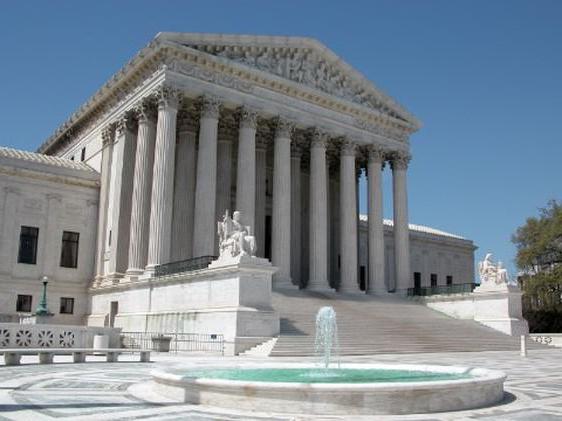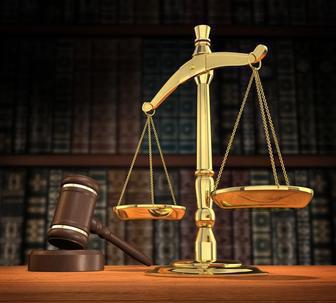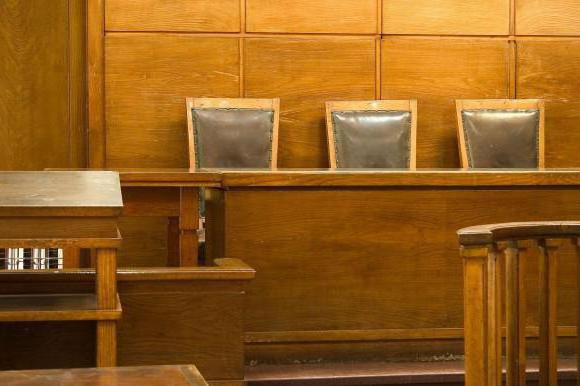Filing a claim entails serious consequences for the defendant's property and non-property rights. The legislator seeks to balance the situation of the parties. To this end, the defendant is provided with procedural remedies for the defendant against the claim.
Means of protection of civil rights and interests
Members of society have all sorts of tangible and intangible benefits. Violation of the rights to them gives reason to seek help from the state. The peculiarity of the protection of civil rights is that the state only creates conditions. Everyone decides whether to defend themselves or not. The choice of funds is also up to the victims. For example, Art. 39 Code of Civil Procedure of the Russian Federation gives the plaintiff the right to fully or partially abandon the claim, change the scope of claims, actually withdraw after the start of the process.

A judge has the right not to accept a waiver leading to a violation of the rights of others.
At the same time, there remains an understanding that the person who applied for protection may be mistaken or even act in bad faith. It is in the interests of the state and the court in particular to find out the objective truth about the conflict in order to apply adequate measures of influence.
So what procedural remedies for the defendant against the claim are provided?
- Counterclaim.
- Objection to the claim.
- Petitions sent to court.
The basic elements of remedies against a lawsuit are listed. A complex of rights can be added to them, which provide significant levers of influence on the proceedings.
Parties to civil proceedings
Typical participants in civil proceedings:
- claimant;
- the defendant;
- third parties with or without independent claims.
The plaintiff is the initiator of the process, it is his actions that serve as the catalyst. Then the judge decides whether the claim satisfies the formal requirements, whether there is no reason to refuse the claim or transfer it to another court (from the world to the district or, conversely, to the arbitration court from the court of general jurisdiction).

Who is the defendant? He is the second side of the case. A positive decision on a claim affects, first of all, its rights and obligations. We are talking about formalities or serious property disputes (from monetary debt to real estate rights).
Third parties claiming or not claiming. They are presented to the defendant or plaintiff or to both parties. The lack of requirements is often associated with the presence of public services in the relations of the parties. For example, the registration service, whose responsibility is to record the results of the process.
From a formal point of view, third parties are not considered participants in the process, however, and they can play a decisive role. And the answer to the question of who the defendant is at the beginning of the trial is not so obvious.
Claim filed by defendant
What is a counterclaim? Code of Civil Procedure means by it a statement of claim sent by the defendant in the framework of an already open civil case.
The objection’s purpose is to destroy the plaintiff’s position, but it does not have the goal of declaring the violated rights and interests and restoring them in contrast to the counterclaim. Counterclaim implies an offensive position.
In addition, the resolution of the dispute essentially subsequently significantly limits the defendant in his ability to assert rights in a controversial situation. The counterclaim eliminates the difficulties that arise in the future.This scheme allows you to speed up the resolution of the conflict.
What other signs does a counterclaim have in a civil proceeding?
- the plaintiff becomes the defendant and vice versa;
- the defendant makes independent claims.
Set-off requirements
The claim by the defendant is aimed at offsetting the claims against the original plaintiff. The admissibility of such an action is determined by law. So, for example, the employer has the right to sue for damages caused by the employee.
A frequent clash arises in a contractual relationship where both parties have rights and obligations at the same time (delivery of goods or provision of services for payment or other goods or services).

The defendant does not actually dispute the validity and legality of the claim, but his actions make a positive decision on the initial claim meaningless.
In practice, the defendant may, without suing, ask the court to offset the obligations.
What is the difference? If the judge refuses to satisfy the claim of the plaintiff, then the request of the defendant remains unanswered. A request for offsetting claims in the form of a claim is considered regardless of the fate of the plaintiff's initial application.
Mutual exclusion requirements
The response lawsuit will completely void the defendant’s lawsuit. For example, the plaintiff asks to collect child support, the defendant ask to cancel the record of paternity.
Another example, one party asks to recognize the contract as invalid, the second asks to oblige the first party to take actions according to the contract.
A similar approach is often used by the defendant's lawyer. The goal is to expand the scope of defense, in addition, some allegations are proved exclusively by filing a lawsuit.
High degree of interconnection
The close connection of claims is determined by the characteristics of the disputed object. Retaliatory action may be based on the same evidence. A striking example is the eviction lawsuit and the counterclaim regarding the recognition of the right to reside in an apartment.
The adoption of a second lawsuit by a court for proceedings depends on the opinion of the judge. How much is it connected with the first, how much does it speed up the proceedings, will the refusal to accept the claim violate the rights of the defendant?
Counterclaim court actions
A counterclaim in a civil proceeding is filed at any time during the trial before the judge is removed to the deliberation room.

The counterclaim procedure does not have any other features. The party is obliged to comply with all formal requirements for it, to pay the state fee. The defendant is no longer required to comply with the rules of jurisdiction, otherwise the simultaneous consideration of claims is excluded.
Failure to comply with the law in the preparation of the claim and the absence of a receipt for payment of the duty is a sufficient reason to leave the lawsuit motionless. The court gives a period to eliminate the identified deficiencies.
Is a counterclaim always paid? Code of Civil Procedure does not deprive of privileges on payment of the state duty at its filing.
If the judge considers that the joint consideration of the claims is unreasonable, a new case is opened. If for some reason, in particular, due to jurisdiction, the judge is not entitled to accept the materials, he indicates where to turn.
The defendant has the right to appeal the return of the counterclaim or transfer of it under jurisdiction.
Having examined two claims, the judge makes a single decision on them, which significantly affects its scope and complexity of preparation.
Defendant's objection
An objection means a reference to circumstances or legal arguments proving the lack of validity of the claim. An objection as a procedural phenomenon is closely connected with the claim; it is not aimed at establishing facts independently or confirming the rights or refuting their existence.

The defendant’s objection is based on the position of the plaintiff and the evidence that he provides to the court or plans to receive through the court. The defendant acts in a similar way, referring to the evidence available to him, the witnesses and the assessment of the defendant's materials.In an objection item by item, the claims of the claim are analyzed and its arguments are analyzed.
Types of Objections
There are two types of objections:
- procedural;
- material.
In its pure form, it is not so easy to meet them. Lawyers substantiate the objection in the light of substantive and procedural law.
Procedural objections
The procedural objection of the defendant is based on a violation by the plaintiff of procedural rules of law. For example, a lawsuit was filed without pre-trial dispute resolution.
The defendant may also indicate other circumstances that indicate the absence of a right to action. For example, the plaintiff turned to the wrong person, and the other side asks to recognize himself as an improper defendant.

Procedural objections are based primarily on violations of the Code of Civil Procedure. The judge should respond automatically to them, but often such violations are considered insignificant. Exceptions are those that are directly specified in the law as a reason for canceling the decision.
Material objections
Objections of a material nature include challenging the claim on the merits. The procedural remedies of the defendant against the suit provide a wide field for maneuver.
The defendant may invoke a misunderstanding of the provisions of the law by the plaintiff. Often this happens in disputes with monopolistic companies.
The organization bases its requirements on the norm of the federal law, “forgetting” about the by-laws, which decipher the content of the points of the law. What is it worth to deal with the field of energy legislation.
Another striking example of a misunderstanding of the law is the debate about which property is considered jointly acquired in marriage and which is not.
The defendant may refer to the absence in reality of the facts presented by the plaintiff, their incorrect assessment or ignoring other circumstances.
For example, the buyer does not have the right to ask for the replacement of a thing if the reason for its inappropriateness is his own actions, improper operation, and not oversight of the seller or manufacturer.
Claims on the return of monetary debt may be rejected because the plaintiff missed the statute of limitations, which is a statement of a purely legal nature.

As can be seen, the procedural remedies of the defendant against the claim relate to both formal and factual aspects.
Defendants often cite evidence that is not relevant or that it was obtained illegally. A common example is receiving paper from a body that does not have the authority to issue such documents.
More serious examples of false evidence. A plaintiff’s surprise may be the witness of the defendant, who refutes the lawsuit or other document refuting the claimant.
Objection filed
The law obliges the court to keep a record of the court session. Violations of the rules for its preparation can lead to a cancellation of the decision, even if there are no other reasons for this.
The defendant has the right to state his objections in writing or to express himself orally, and his remarks must be noted in the minutes. It is best, of course, to draw up a document in advance, so there are more guarantees that the judge will take into account the opinion of the defendant.
By what approximate formula are the objections made?
- name of court;
- case number;
- initials of the judge;
- data of the plaintiff, third parties.
Submission is allowed at any time in the process, but it is better to do this in advance. Practice shows that it’s better to pay attention to some things a little later, so that the other side, with the support of a not entirely impartial judge, can level their significance.
Like all papers, it is advisable to submit the document through the office and leave a mark with incoming data on its copy.
Petitions as a tool of protection
The petitions as procedural remedies for the defendant against the claim in the civil procedure are less noticeable, but they play a serious role when used correctly.
They are understood as statements by the parties made during the proceedings.
At first, the court gives the right to speak about the request to the other participants, and then makes a decision. The judge has three options:
- completely agree with him;
- completely refuse it;
- partially agree with him.
The defendant’s petition for the court may relate to a variety of things, as discussed below.
How to draw them up correctly? Be sure to record all your statements on paper and submit copies to the office, and not directly transmit to the judge in the office.
Sample compilation algorithm:
- name of court;
- case number;
- parties (plaintiff, defendant);
- circumstances justifying the request and the request itself;
- signature, date.
If necessary, a copy of the power of attorney is attached.
An application may consist of several lines, or may fill several pages.
What petitions are we talking about?
- engaging another co-defendant;
- exclusion from the process as a respondent;
- demanding evidence;
- introduction of evidence to the case;
- appointment of expertise.
A well-written statement is based on law. It is advisable for the author to quote norms or refer to them.
Attraction and replacement of the defendant
A person involved as a defendant, like other participants, has the right to ask to attract another person as a defendant. The judge has the right to only offer the plaintiff to agree to the replacement or not, he does not have the right to independently carry out the replacement.
Failure to replace the defendant actually leads to a loss of business. The plaintiff still has the right to file a similar lawsuit against the appropriate, according to the court, defendant or appeal the decision on the original defendant.
Attracting a co-defendant is possible both at the initiative of the court, and at the request of one of the parties.
The main reason for involving rights and obligations in the process in a community is that their common interests are affected. For example, we are talking about the co-owners of one property.
Art. 39 Code of Civil Procedure of the Russian Federation gives the right to change the basis or subject of the claim, which may well lead in the midst of the trial to replace the defendant.
Claiming and sharing evidence
The parties are obliged to justify why they cannot obtain any evidence without the help of the court.
The reason may be the actions of officials, as evidenced by a written response
The lack of response to the request is justified by a mark on the copy of the application submitted to the organization or institution.
The introduction of new evidence is made upon application. Code of Civil Procedure obliges them to present it before the consideration of the case on the merits, and being late must have a good reason. However, almost all judges ignore this rule, accepting new evidence throughout the process.
Appointment of expertise
It is appointed either at the initiative of the court or at the request of the parties, both one and all parties can declare.
Examination is a study conducted by a specialist of relevant qualifications in the field of science, craft or technology. They resort to it when there is a need for special knowledge that the court does not possess.
The defendant has the right to offer his questions to the expert, regardless of who took the initiative in attracting the expert.